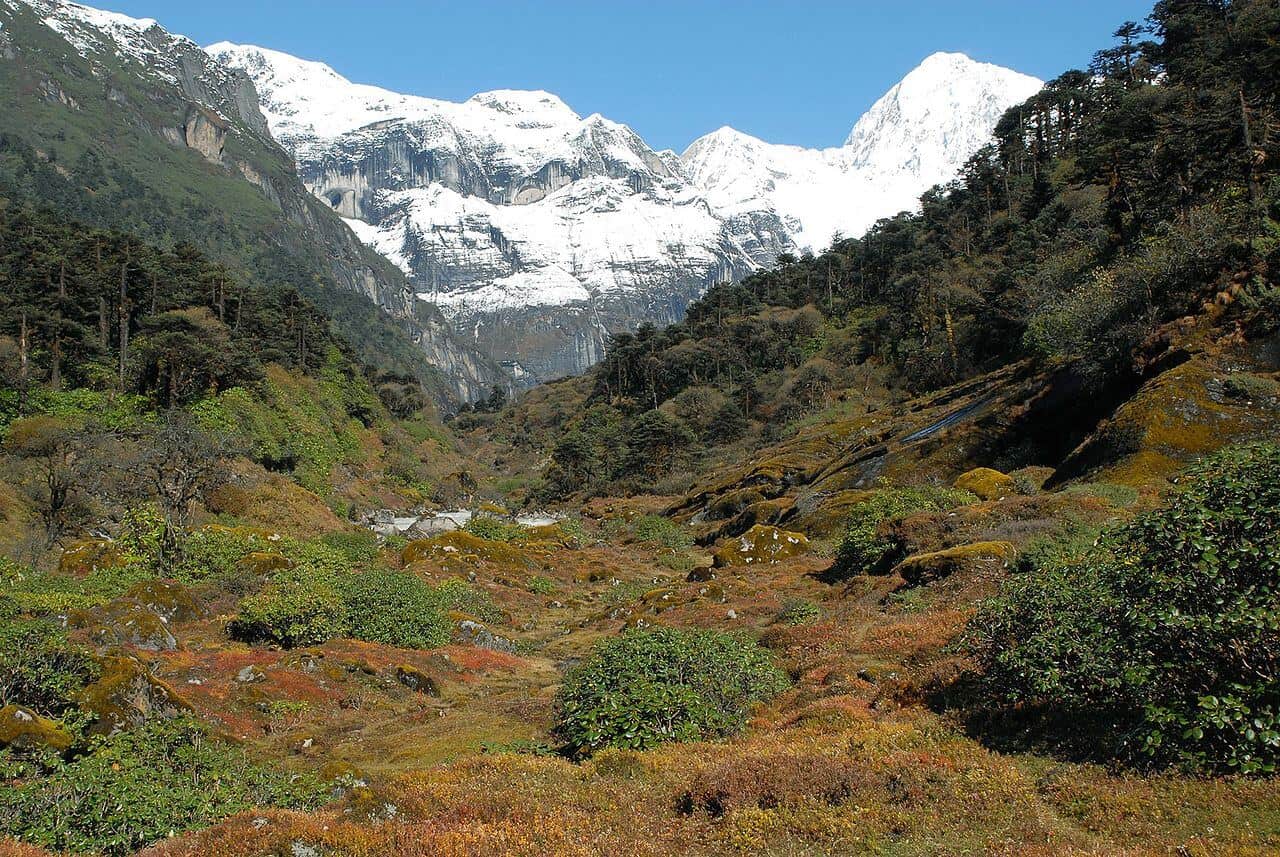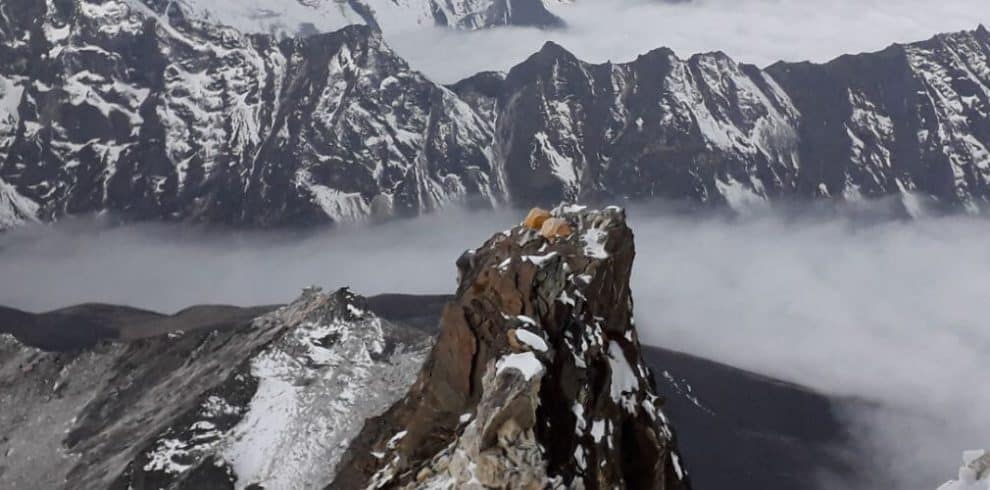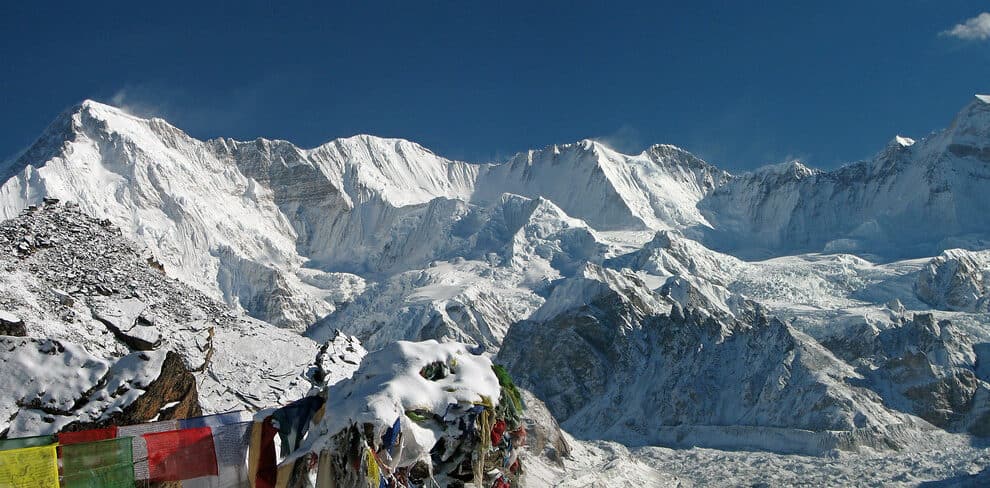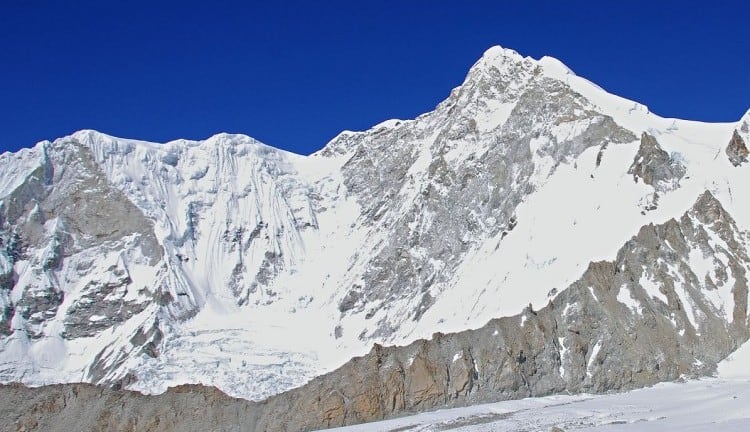Overview
Mount Makalu at 8463m is a benchmark for climbers to measure their skills in high altitude mountaineering. It demands strong physical and mental strength as it is one of the most technically challenging peaks. Its steep pitches and knife-edge ridges make climbing Makalu harder than other peaks over 8000 meters.
Makalu lies approximately 20kms east of Everest and is the fifth highest mountain in the world. It lies in the remote region of Makalu Barun valley, where nature is pure in its wilderness. It is partly because this region remains isolated from the popular expedition destination of the Khumbu region.
The exotic flora and fauna in this region of Nepal remain untouched in its purest form. The green hills and the snowy mountains make for a dreamy landscape. On reaching the summit, the views of some of the world’s highest mountains like Everest, Cho Oyu, Baruntse, and Lhotse will leave you in awe.
The trekking route to the basecamp involves 10 days of trekking through the remote region of Makalu Barun National Park. At present, helicopter access to the basecamp has made it easy to reach the starting point of the expedition. You will see very few expeditions conducted in this region due to its remoteness.
For ascending the peak, you will be using the northeast ridge, which is the frequented route for summiting Makalu. Unlike other mountains, Makalu ascent makes use of 5 different camps above the popular Makalu Base Camp at 4800m. There is an advanced base camp at 5700m and 4 different camps above it at different altitudes.
Advanced Base Camp: After acclimatizing for 2-3 days at the Makalu Base Camp, you head towards the Advanced Base Camp at the foot of Makalu Glaciers at 5700m. You will be spending most of your time in this camp during the expedition.
Camp I: We have Camp I for the Makalu expedition at 6347m. The route from the advanced base camp passes through the rocky moraine of the Chango Glacier. This day’s climb involves walking through crevasses and ascending a steep ice-snow wall with fixed lines.
Camp II: The climb from Camp I to Camp II is relatively easy. It involves a trip across an easy glacier to reach the altitude of 6600m, which is a small and flat sheltered area in between ice walls.
Camp III: The climb from Camp II to Camp III involves climbing across a relatively easy section followed by some mixed climbing technical parts till Makalu La at 7450m. However, Camp III is at an elevation of 7450m for your convenience as climbing Makalu La requires careful consideration of weather conditions.
Camp IV: To reach Camp IV, you traverse through a large flat glacier with multiple crevasses. It takes 3 hours to reach Camp IV at 7800m from Camp III.
Descending from Makalu is not as easy as other mountains. It takes almost 16 hours on the final summit day to ascend and descend from and to Camp IV. By then, your body will feel the exhaustion, and you will need to keep yourself focused on further descending on the same day or the following day.
A short history of the Makalu expedition
A French expedition team led by Jean Franco first completed the Makalu expedition. Eight members from the same team made it successfully to the summit, which was a record given the success rate of previous expeditions at the time. This team used the same route by the north face and northeast ridge.
Why You Will Love Makalu Expedition
- You will be climbing one of the most challenging technical mountains in the world. Makalu tests your physical strength, endurance, determination, and technical skills at its best.
- Makalu offers spectacular views of the world’s tallest mountains, including Everest, Lhotse, Cho Oyu, and many more.
- You will enjoy the remoteness and wilderness of this expedition, unlike any other region of Nepal. You will be trekking through the hills of eastern Nepal before reaching the tranquil Makalu Barun Conservation Area.
- You will be climbing with a highly professional team of expert mountaineers experienced in climbing in extreme weather conditions.
Is Makalu Expedition Right For You?
- If you’re looking for a challenge to enhance your skills as a professional mountaineer, Makalu is a perfect peak to establish yourself as a professional.
- You will be trekking through the region known for its wilderness, exotic flora and fauna, and unmatchable beauty of the landscape.
- If you love trekking in the remote regions, you will surely love the Makalu Expedition as it takes you to one of the least explored areas of Nepal.
- There are five different camps at different altitudes used for climbing Makalu that make the ascent easier for climbers.
- Makalu is a comparatively cheaper expedition than the Everest expedition. It gives you great insight and experience to prepare you for climbing Everest.
Makalu Expedition – Outline Itinerary
| Days | Itinerary | Altitude(in meters) | Duration(in hours) |
|---|---|---|---|
| Day 01 | Arrival Kathmandu & transfer to hotel | 1400 | |
| Day 02 | Prepare for Expedition, Hotel | 1400 | |
| Day 03 | Expedition Briefing in Ministry of Tourism, Hotel | 1400 | |
| Day 04 | Fly to Tumlingtar & Drive to Num, Lodge | 1490 | 2 hours |
| Day 05 | Trek to Seduwa, Lodge | 1460 | 5-6 hours |
| Day 06 | Trek to Tashigaun, Lodge | 2070 | 5 hours |
| Day 07 | Trek to Khongma La (Danda), Lodge | 3760 | 6 hours |
| Day 08 | Trek to Mumfuk, Lodge | 3550 | 5-6 hours |
| Day 09 | Trek to Yangle Kharak, Lodge | 3610 | 5 hours |
| Day 10 | Trek to Merak, Lodge | ||
| Day 11 | Trek to Sersung (half day rest) for acclimating, Lodge | 4615 m | 3-4 hours |
| Day 12 | Trek to Makalu Base camp, Camp | 5000 m | 4-5 hours |
| Day 13-42 | Climbing Period for Makalu (8,463m), Camp | ||
| Day 43 | Trek to Mumbuck, Lodge | 3550 m | 5-6 hours |
| Day 44 | Trek to Khongma La (Danda), Lodge | 3760 m | 5-6 hours |
| Day 45 | Trek to Seduwa, Lodge | 1460 m | 6-7 hours |
| Day 46 | Trek to Chichila, Lodge | 1980 m | |
| Day 47 | Trek to Tumlingtar, Lodge | 285 m | 4-5hours |
| Day 48 | Fly back to Kathmandu & transfer to hotel | 1400 m | |
| Day 49 | Free Day in Kathmandu, Hotel | 1400 m | |
| Day 50 | Final Departure |







Write a Review